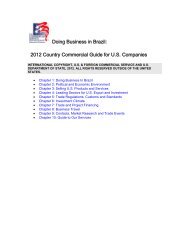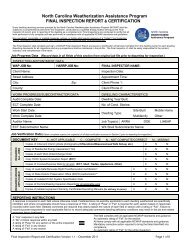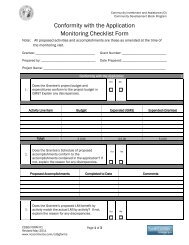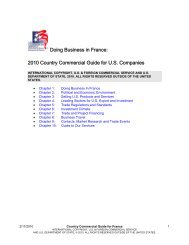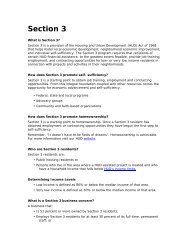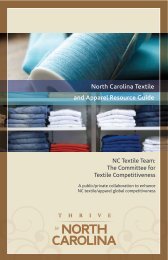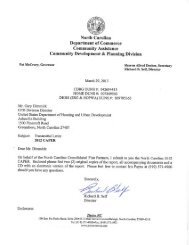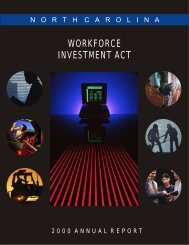Doing Business In (Insert Country Name Here) - Department of ...
Doing Business In (Insert Country Name Here) - Department of ...
Doing Business In (Insert Country Name Here) - Department of ...
Create successful ePaper yourself
Turn your PDF publications into a flip-book with our unique Google optimized e-Paper software.
<strong>of</strong> spare parts, equipment and new technologies to reduce costs. Parts, equipment andfirst and second-tier components from the U.S. might experience an increase in exportsdue to forecasted Mexican production <strong>of</strong> new models that have shifted from U.S.assembly plants.The economic outlook for 2010 is conservative. Eduardo Solis, Chairman <strong>of</strong> the MexicanAuto Association, acknowledged that the industry’s situation is linked to the economyand financial environment and forecasts recovery in 2010 would be slow with a slightgrowth in car sales <strong>of</strong> five percent by the end <strong>of</strong> the year. To <strong>of</strong>fset the fall in sales, theindustry and government will have to develop other strategies to target niches in thedomestic market. The industry is currently working with the government to reduce taxesfor purchasing and owning a car, and an old car replacement program. Despite thedecline in demand and production, some automotive companies announced largeinvestments in Mexico last year. This is due to Mexico’s advantage in low labor costsand recent technological development in the auto industry. <strong>In</strong> addition, companies arelooking for lower manufacturing and export costs.Best Prospects/ServicesReturn to topThe greatest opportunities include: spare and replacement parts for gasoline and dieselengines, electrical parts, collision repair parts, gear boxes, drive axles, catalyticconverters, and steering wheels. <strong>In</strong> the first and second-tier supply chain sector,opportunities include: OEM parts and components, precision assembly devices,machined parts, hybrid vehicle components, suspension systems, and pre-assemblycomponents such as small and progressive stampings. Other products in demandinclude electronic components, specialized tooling, systems that eliminate waste andgreen technologies such as new combustion systems to reduce gas emission and oilconsumption.OpportunitiesReturn to topGiven the economic slowdown, lack <strong>of</strong> financing, high interest rates and competition, themarket has become more price-sensitive. <strong>In</strong> Mexico, 70 percent <strong>of</strong> new cars arepurchased on credit. Because <strong>of</strong> the credit shortage, new car sales have decreased andmany consumers choose to maintain their vehicles for a longer period <strong>of</strong> time. As aresult, OEMs located in Mexico will continue to reduce production along withimplementing strategic changes in their brand vehicles, including new technologies tomake them more efficient and less expensive.The number <strong>of</strong> used vehicles being imported, especially after the NAFTA allowance fornewer models, provides opportunities for exports <strong>of</strong> repair equipment and replacementparts. Effective January 2009, Mexico imposed a 10 percent duty on imports <strong>of</strong> usedvehicles, which was decreased to 3 percent in March 2009. U.S. companies still facesome barriers when exporting to Mexico. The most significant requirements includehaving a Certificate <strong>of</strong> Origin, and the 3 percent tariff based on a minimum estimatedprice, or “reference price” for the given year, make, and model <strong>of</strong> the car. Importers <strong>of</strong>used vehicles must post a guarantee representing any difference in duties and taxes ifthe declared customs value is less than the established reference price. U.S. exportersare advised to work closely with their importers and customs brokers to ensure that allspecific requirements are met.




